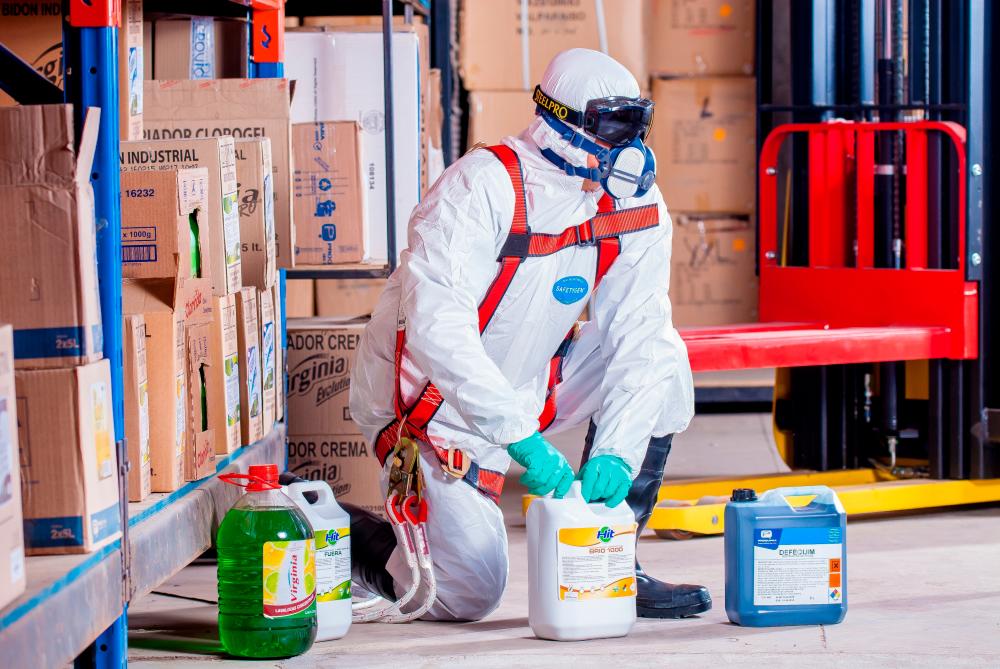THE decisions companies make concerning the use of chemicals in the workplaces should be based on an objective analysis of the hazards, rather than merely the perception of the risks involved.
Once this has been accomplished, a reasonable means of controlling the hazards through work practices, engineering controls and protective equipment etc, could be established.
To assess the hazards of a particular chemical, both the physical and health hazards of the chemical must be considered.
Before using any chemical, the safety data sheet (SDS) or other appropriate information should be reviewed to determine what conditions of use might pose a hazard.
Accidents with hazardous chemicals could be quite severe.
The key to prevention of these accidents is awareness. Once the hazards are known, the risk of an accident may be reduced significantly by using safe work practices.
The health effects of hazardous chemicals are often less clear than the physical hazards.
Data on the health effects of chemical exposure, especially from chronic exposure, are often insufficient.
When determining the health effects of chemicals, two terms often used are toxicity and hazard.
Toxicity is an inherent property of a material, similar to its physical constants.
It is the ability of a chemical substance to cause an undesirable effect on the body.
Hazard is the likelihood that a material will exert its toxic effects under the conditions of use.
Thus, with proper handling, highly toxic chemicals can be used safely.
Conversely, less toxic chemicals can be extremely hazardous if handled improperly.
The health risk of a chemical is a function of the toxicity and the exposure.
No matter how toxic the material may be, there is little risk involved unless it enters the body.
An assessment of the toxicity of the chemicals and the possible routes of entry will help determine what protective measures should be taken.
The simplest way for chemicals to enter the body is through direct contact with the skin or eyes.
Skin contact with a chemical may result in a local reaction, such as a burn or rash, or absorption into the bloodstream.
Absorption into the bloodstream may then allow the chemical to cause toxic effects to other parts of the body.
Wear gloves and other protective clothing to minimise skin exposure.
In the event of chemical contact on skin, rinse the affected area with water for at least 15 minutes.
Chemical contact with eyes can be particularly serious, resulting in painful injury or loss of sight. Wearing safety goggles or a face shield can reduce the risk of eye contact.
The respiratory tract is the most common route of entry for gases, vapours, particles, and aerosols.
These materials may be transported into the lungs and exert localised effects, or be absorbed into the bloodstream.
Most chemicals have an odour that is perceptible at a certain concentration.
However, olfactory fatigue may occur when exposed to high concentrations or after prolonged exposure to some substances.
This may result in the perception the odour had diminished or disappeared, while the danger of acute exposure remains.
Volatile hazardous materials should be handled in a well-ventilated area.
Preferably a local exhaust ventilation (LEV) should be used to reduce the exposure.
When an LEV is not practical, then a respirator should be worn.
The gastrointestinal tract is another possible route of entry for substances.
Although direct ingestion of chemicals is unlikely, exposure could occur as a result of ingesting contaminated food or beverages, touching the mouth with contaminated fingers, or swallowing inhaled particles which have been cleared from the respiratory system.
The possibility of exposure by this route could be reduced by not eating, drinking, smoking, or handling food in the workplaces.
Always wash your hands thoroughly before any consumption of food.
Comments: letters@thesundaily.com









